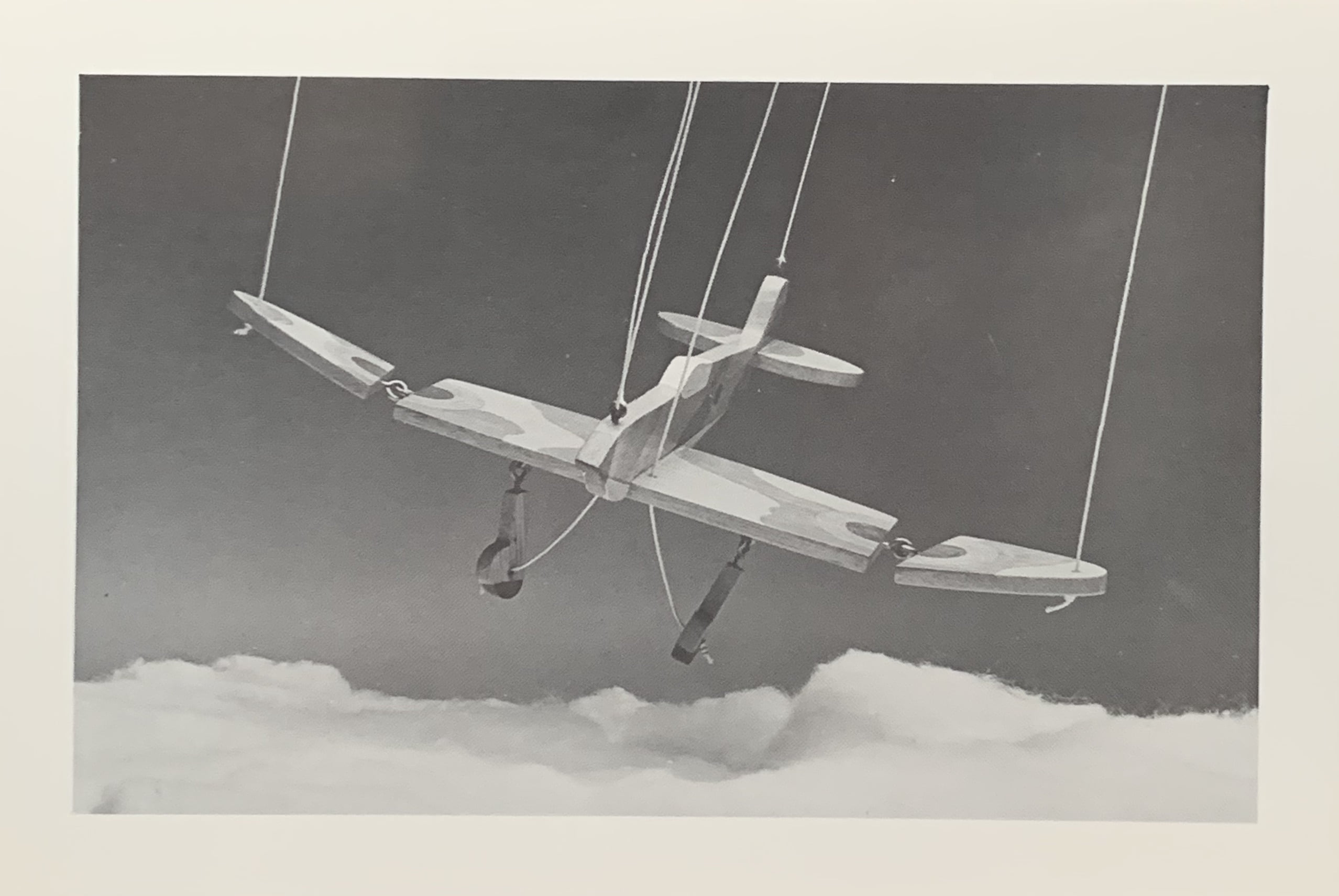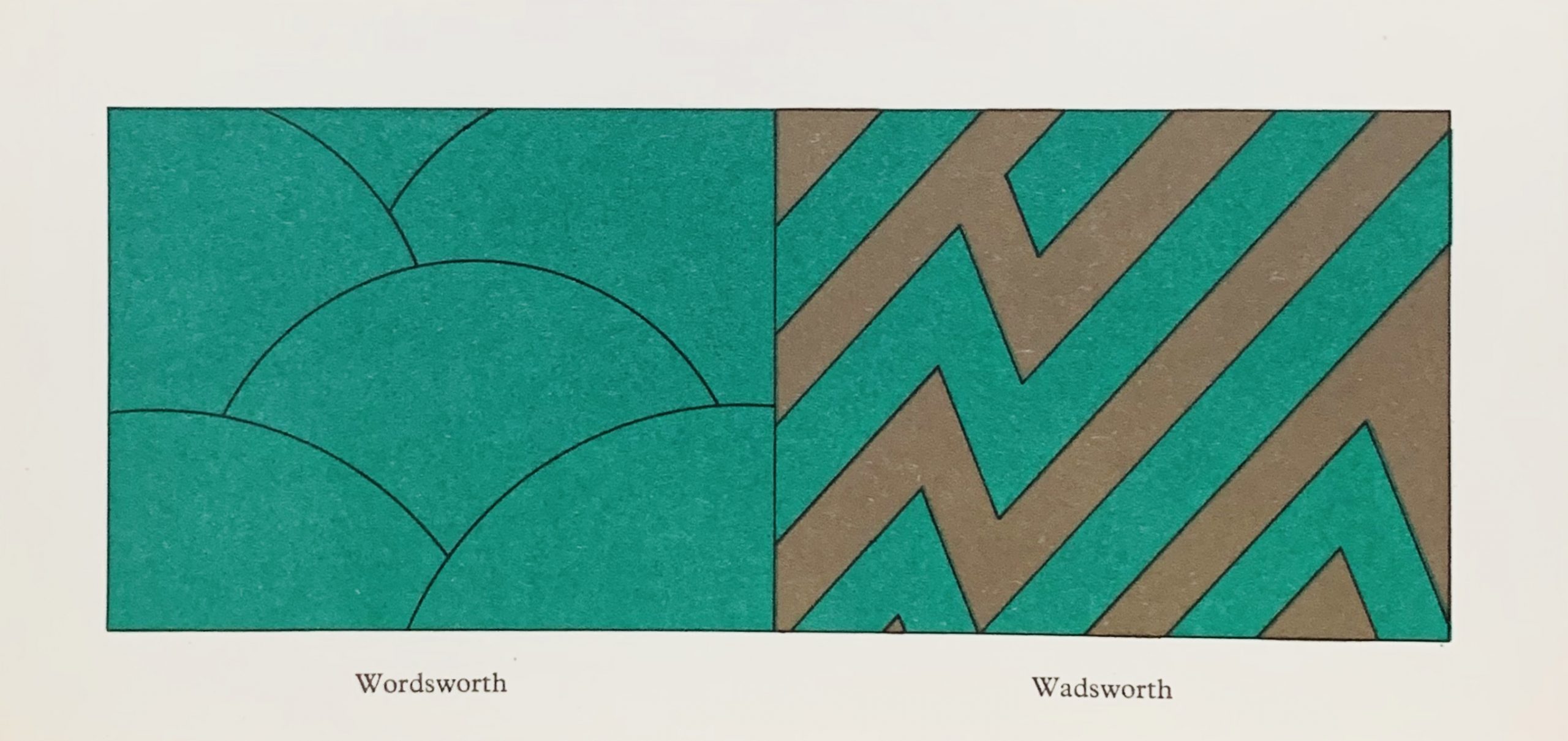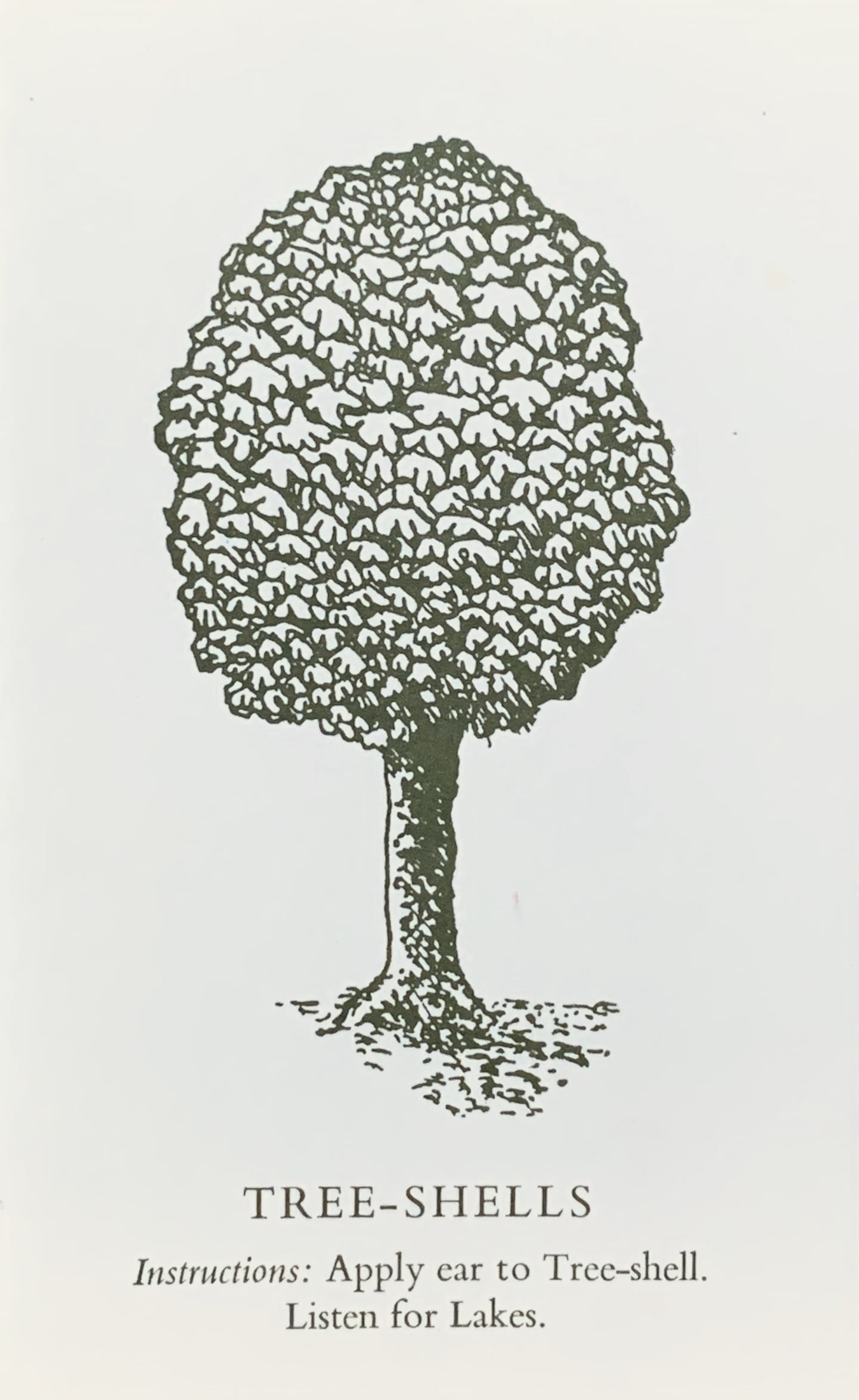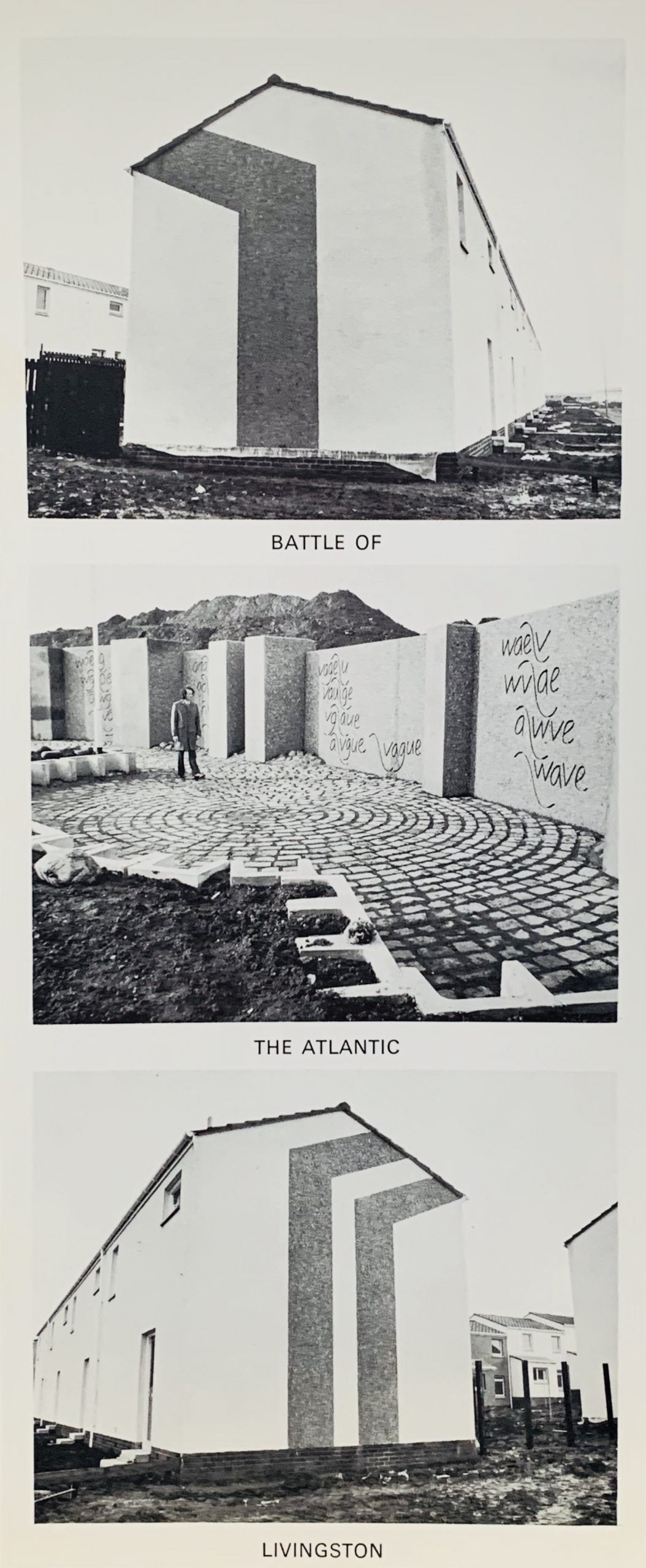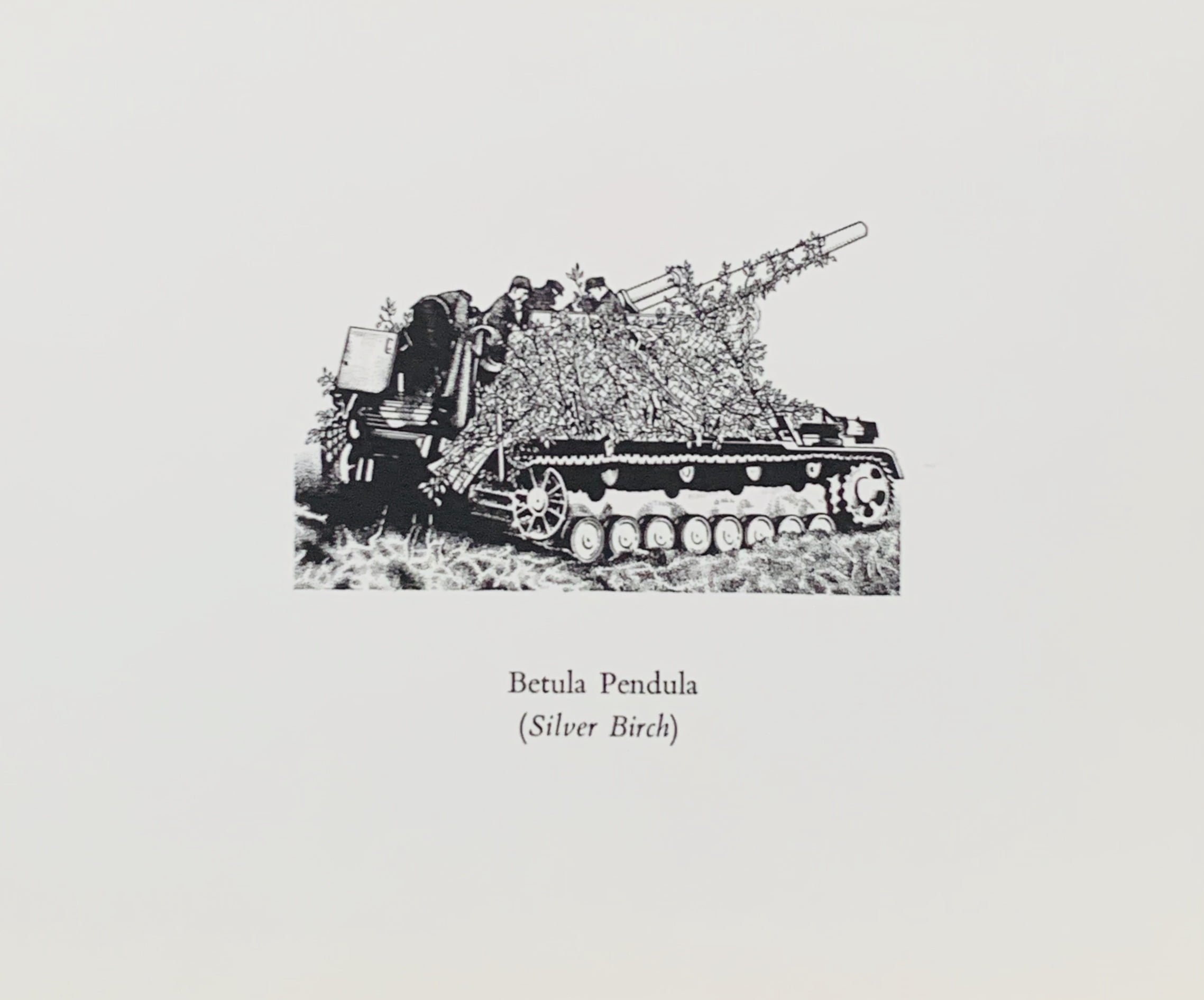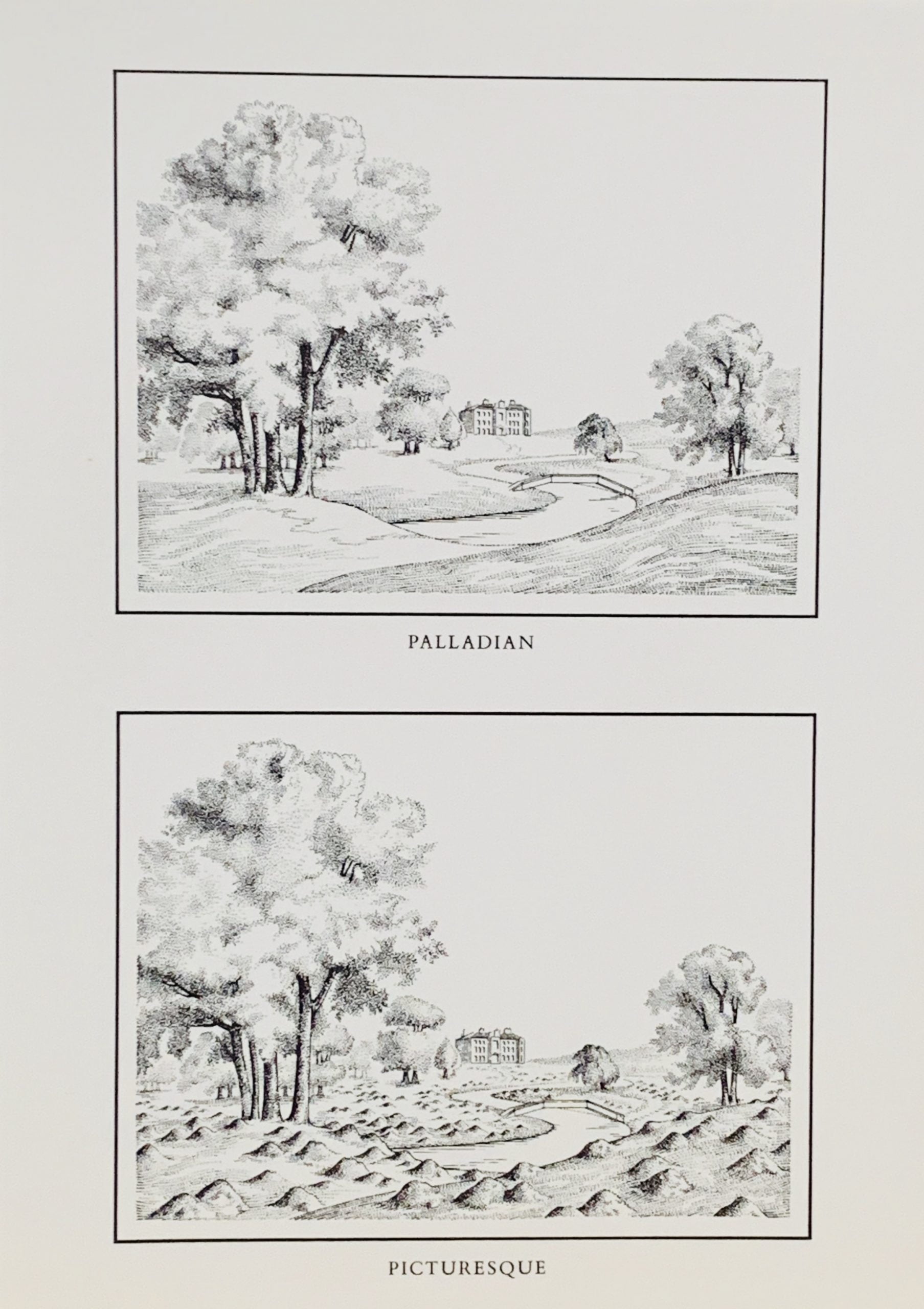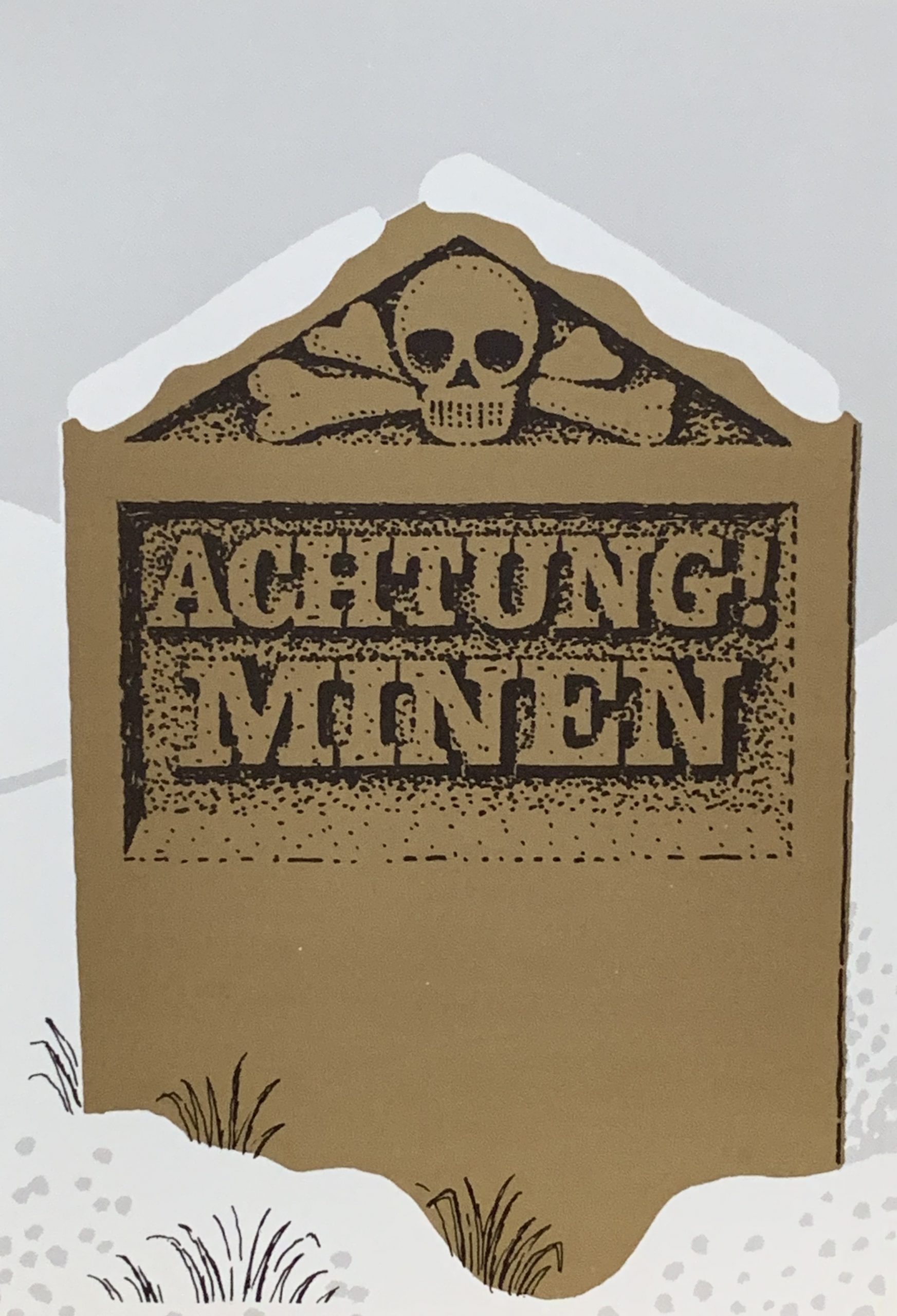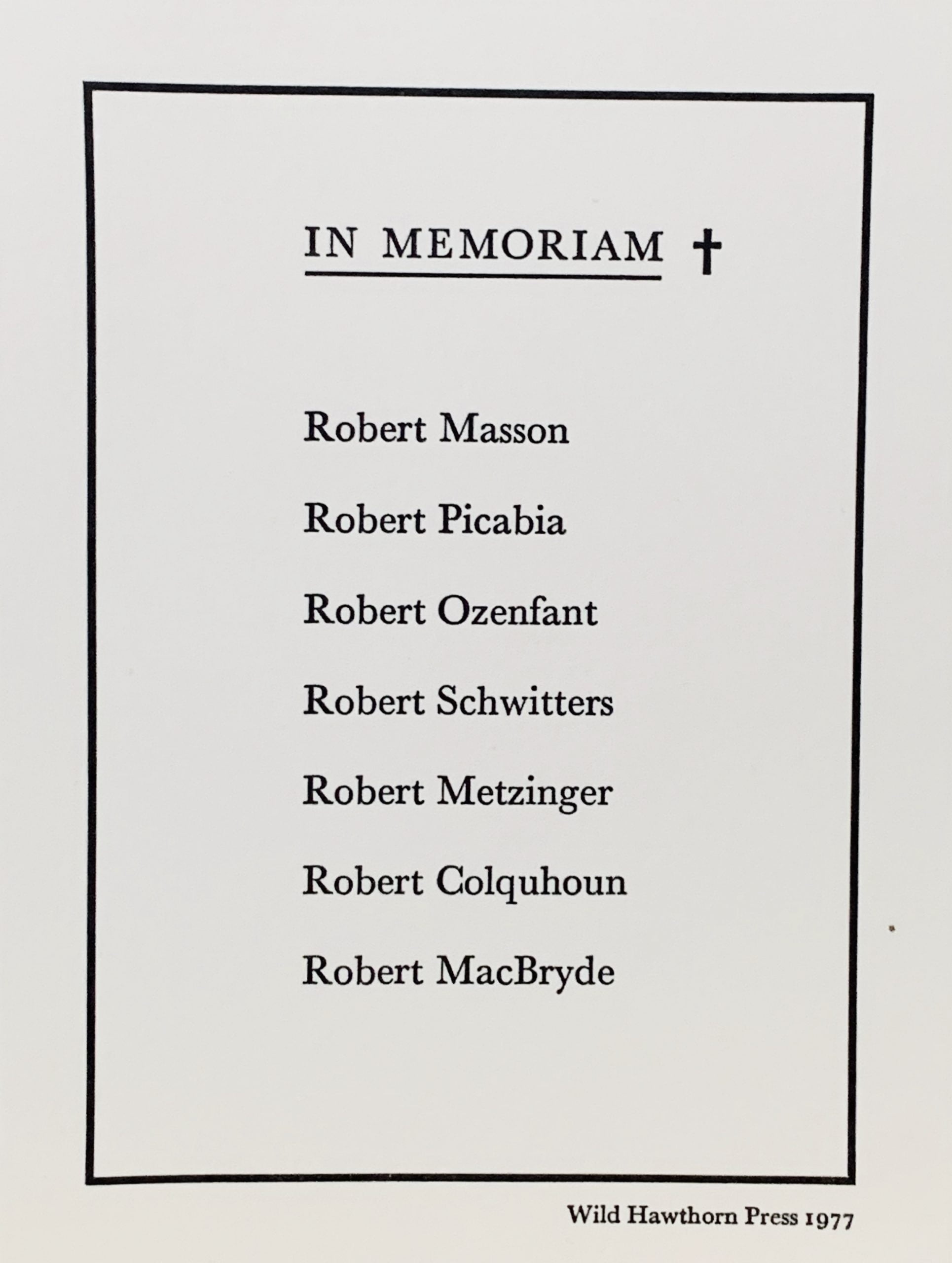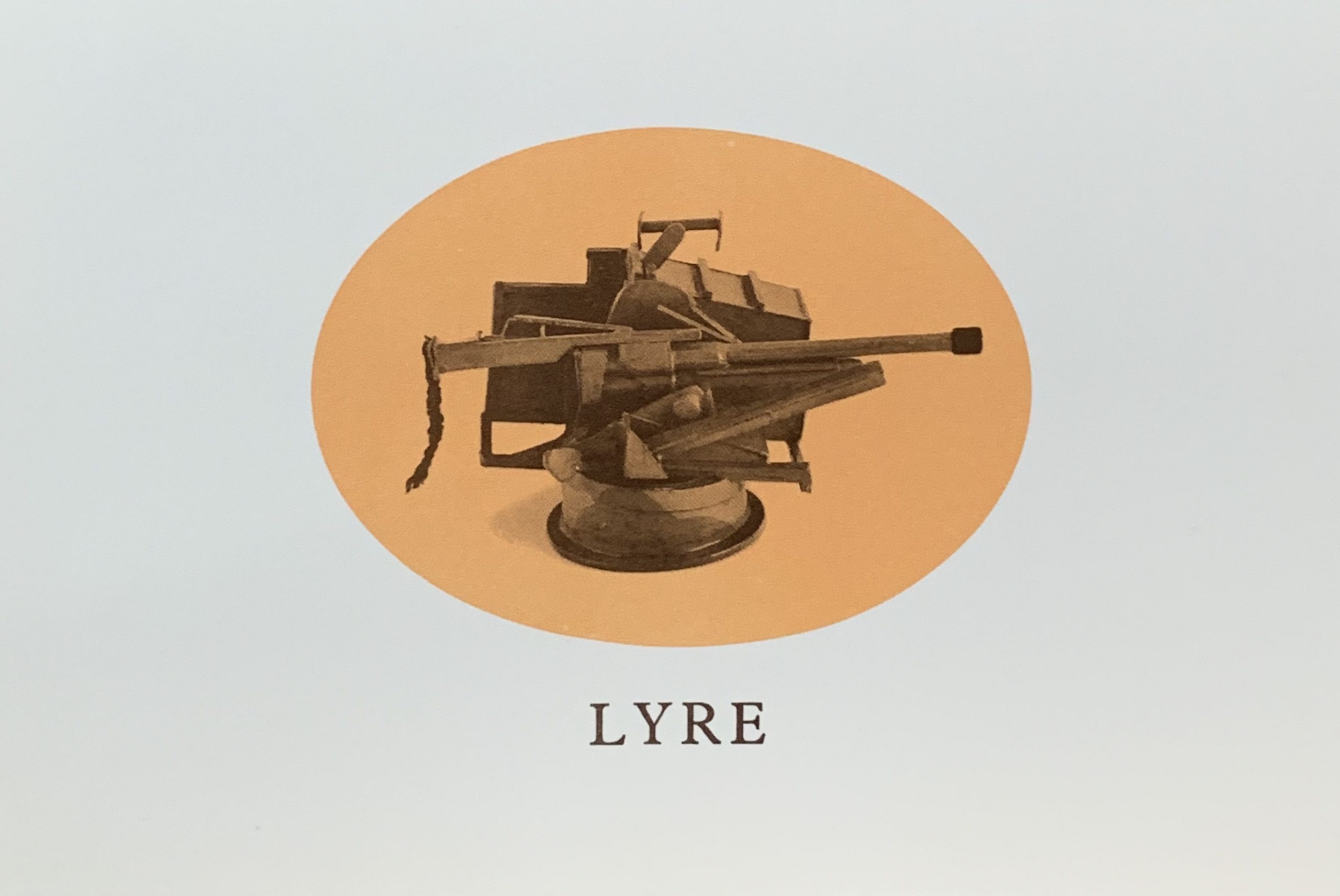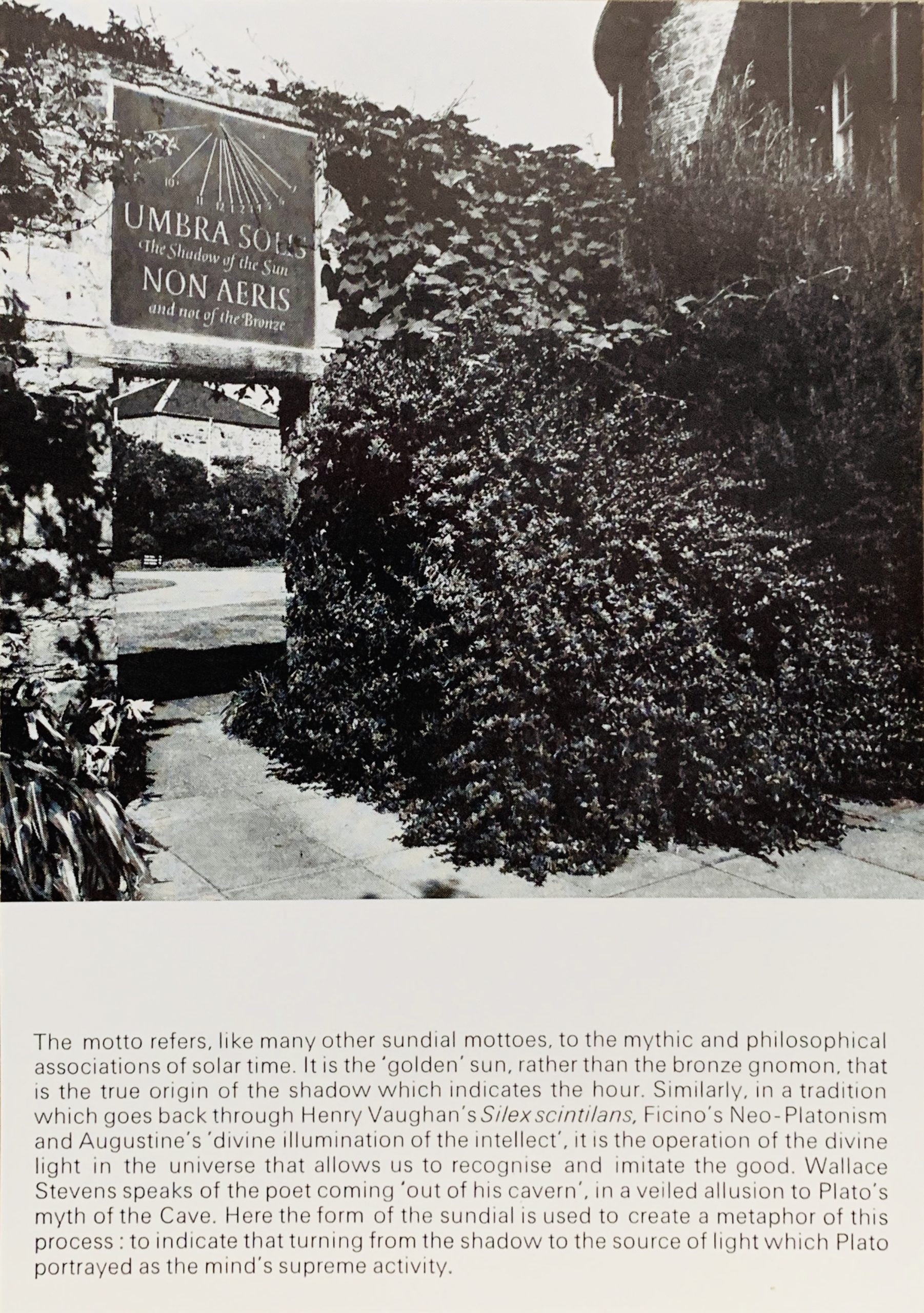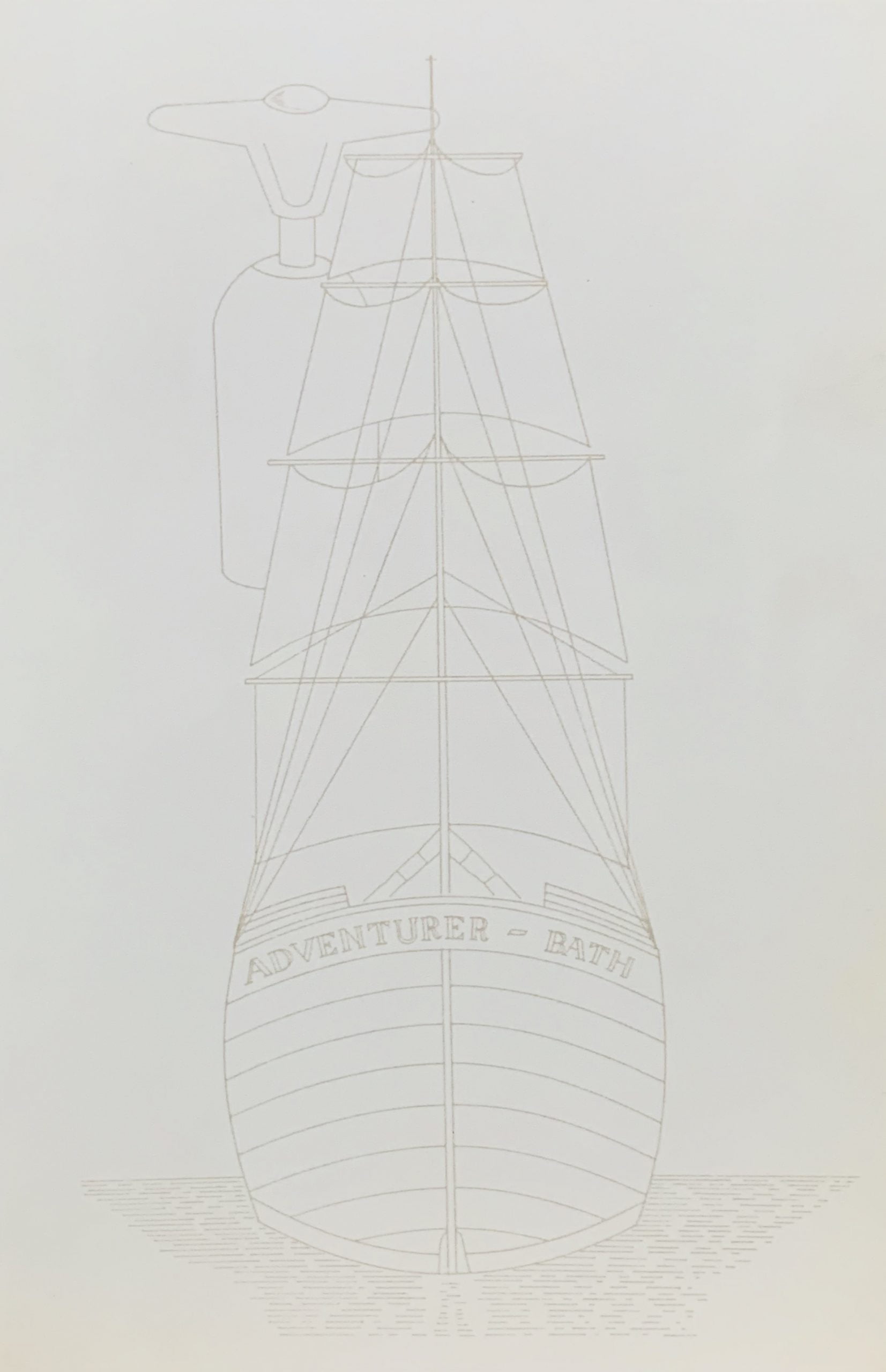10 Jun MARIONETTE (1). 1978.
Dunsyre: Wild Hawthorn Press, 1978
15 x 10.5cm, 2pp. Black on white card with a photograph by Dave Paterson of a toy military airplane made by Finlay which has been attached to a cross bar with string to create a marionette. The plane is painted in British camouflage and decals. The plane is flying amidst clouds (cottonwool?) and ready for battle. This is a companion card to the next one (Marionette 12) and presumably shows the fighter before any encounter with an enemy. VG+.
...

